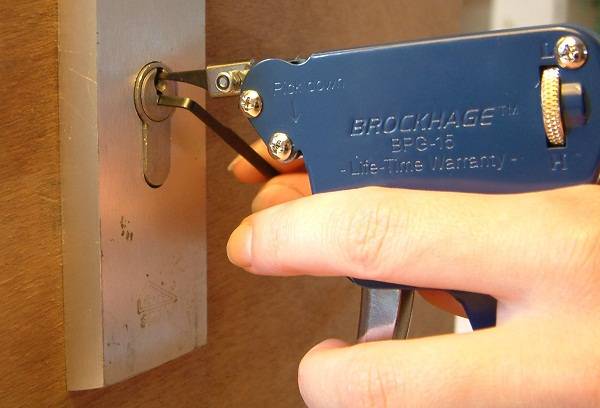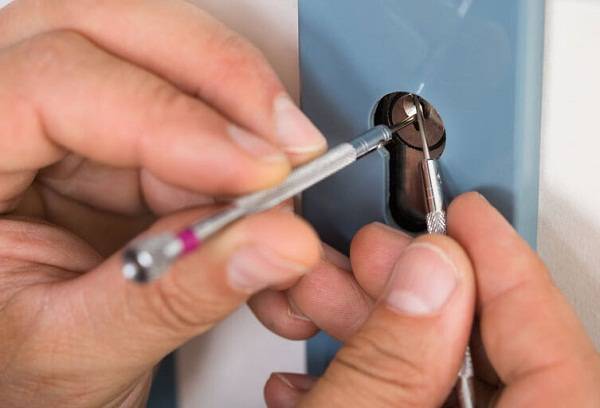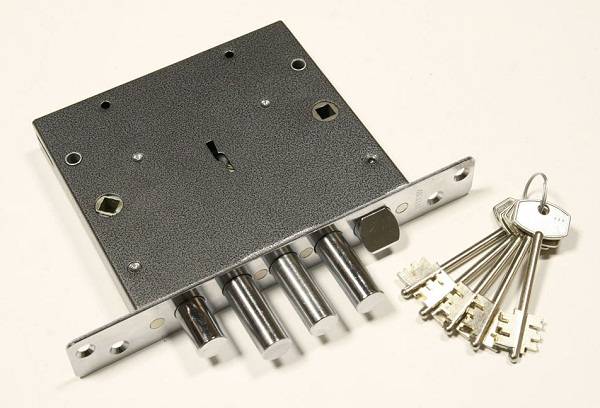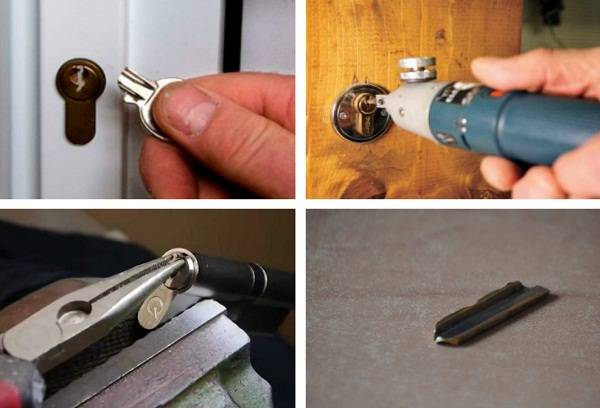How to remove a broken key from a door lock
It can happen to any of us that when closing or opening the front door of an apartment, house or garage, the key in the lock breaks. How to remove the remaining piece of the lock and open the door. If you don’t panic and approach the issue calmly and competently, then in 80% of cases you can cope with the problem without losses, and in another 10% you will be able to limit yourself to replacing the cylinder or lock.
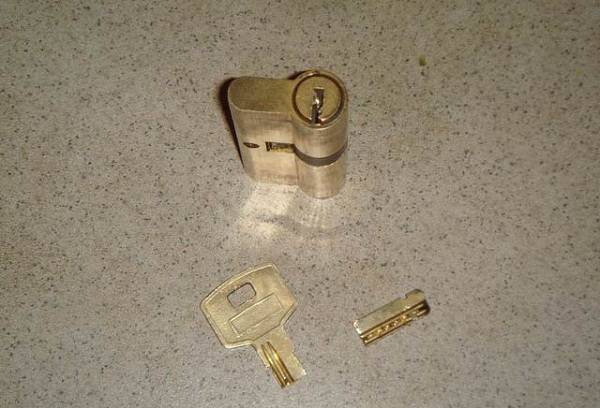
The main reasons why a key breaks in a lock
There are quite a few such reasons, but the main ones are the following:
- Wear and tear of the internal lock mechanism and the key itself.
- Contamination of the secret mechanism or entry of foreign objects into the well.
- Error when opening the lock (key not fully inserted or another one inserted by mistake).
- Trying to turn a jammed key using improvised objects and tools (pliers, hammer, steel pin, etc.).
- Poor quality material from which the lock is made.
But whatever the reason, if the key breaks and a piece remains in the lock, you need to decide what to do in this situation.
How to remove a broken key from a keyhole
If the key in the lock breaks, you should not immediately resort to radical measures - breaking the door or cutting it with a grinder. You need to try to remove the fragment and open the door.
Under no circumstances should you immediately throw away the piece of key remaining in your hands.If you manage to remove the stuck part, then using two halves, specialists in the workshop will make a new key in a few minutes that can be used to open the lock.
Before taking any action to remove the stuck part of the key, you need to drop grease into the keyhole several times and wait 15-20 minutes until it spreads over the entire surface of the fragment and the lock mechanism. This will significantly increase your chances of success. Suitable lubrication is WD-40, gun and machine oil (spindle), any transmission or automobile oil, as well as brake fluid.
- The ideal and easiest option for removing a broken key is to disassemble the lock and remove the broken piece. But this can be done when the door is open (or it is possible to open it from the inside). If you plan to use the lock in the future, then before assembly it must be thoroughly cleaned and lubricated.
- If a piece of the key sticks out of the hole, you can try to grab it with round nose pliers, small pliers or tweezers. This must be done carefully. Do not apply great force or jerk sharply. Gently rocking up and down and from side to side, you should try to pull out the stuck part. You can simultaneously lightly tap on any accessible part of the lock. Vibration and shaking will help move the fragment from its place.
- If possible, insert two thin awls into the cracks between the fragment and the keyhole from above and below (or from the sides) and, swinging the stuck part, try to remove it.
- A truly jewelry, but very effective way to remove a piece of any key is using a self-tapping screw. It is necessary to drill a thin hole at the end of the fragment, being careful not to damage the lock or break the drill.A self-tapping screw of the appropriate diameter must be screwed into the resulting hole. Then, holding the head of the screw, constantly shaking the stuck piece, carefully “fish” it out of the lock.
- A less effective, but quite effective method is using a jigsaw file. It is necessary to cut off the fastening tip of the file. The file must be inserted under the key so that the inclination of the teeth is “towards you”, carefully turn the teeth towards the fragment and pull outward. The operation is repeated several times until the stuck fragment can be removed.
- If the key is made in the form of a cylindrical pin with bits (level locks), then you can remove the fragment using a copper or brass tube of a suitable diameter. Its size is selected according to the part remaining in the hands. The tube must be placed on the pin with very great force. Having slightly widened the very tip of the tube, you need to heat it with a blowtorch or over a gas burner, then forcefully put it on the fragment sticking out in the lock. After waiting for the tube to cool well, pull it out of the lock along with the clamped part of the key.
Opening a door with a damaged lock
What to do if the key in the lock breaks and you cannot remove the piece. To open the door, you will have to sacrifice, at best, the lock cylinder, at worst, the lock itself.
To open the lock, you can do the following:
- If the lock is not installed correctly, the cylinder mechanism may protrude above the escutcheon. In this case, the end of the cylinder can be clamped with a gas wrench and rolled up. All that remains is to clear the hole from debris and open the door with a flat-head screwdriver.
- If the cylinder does not protrude, then you can additionally sacrifice the trim by tearing it off with a nail puller or chisel, after which you can use a gas wrench.
- If you don’t have a gas key, you can knock out the cylinder with a hammer, but it is advisable to do this after the internal armor plate has been removed, which is not always possible. It must be borne in mind that after such an opening, the lock will most likely have to be replaced.
- Using a drill, you can drill a cylindrical insert slightly below the key hole. This will destroy the tsugali - the mechanism of the code. Then, having pulled out the drill, lightly tap the end of the cylinder so that the debris falls down and does not jam the lock. All that remains is to insert a flat-head screwdriver instead of a key and open the lock. If the key is double-sided (has shaped cutouts on both sides), then you need to drill from both sides.
- You can completely drill out the cylinder mechanism. For this, a drill with a diameter of 6-10 mm is used. This usually damages the cam. To unlock the lock, you need to bend the end of a screwdriver or strong wire about 1 cm (it should reach the locking mechanism), insert it into the hole and move the bolt.
If you can’t cope with the problem yourself, then breaking or cutting the door is still not worth it. It is better to contact a service department whose employees know what to do in a specific situation.
The cause of key failure is often contamination or wear of the lock. You can extend its performance by periodically lubricating the mechanism with spindle or gear oil. If the lock begins to periodically jam, it is better to repair or replace it.
